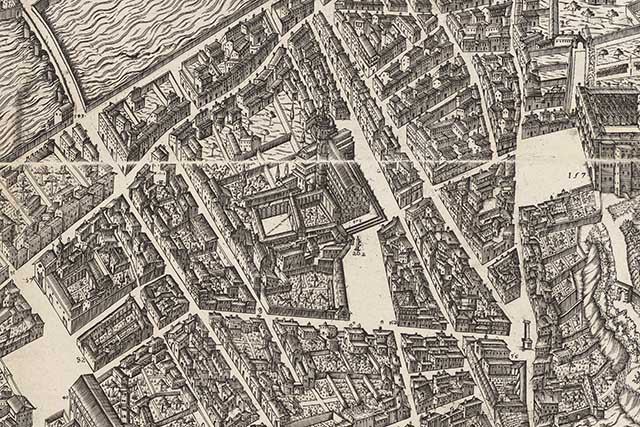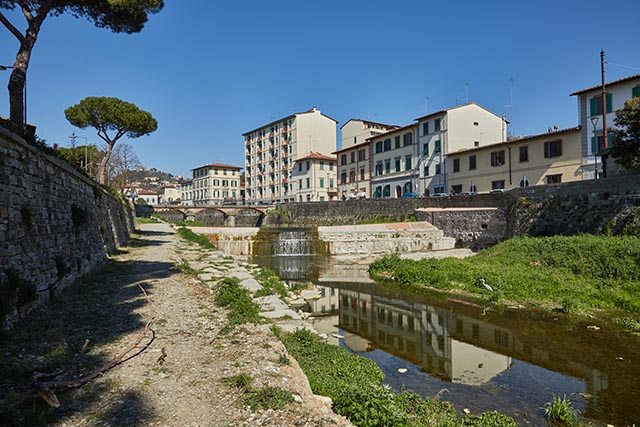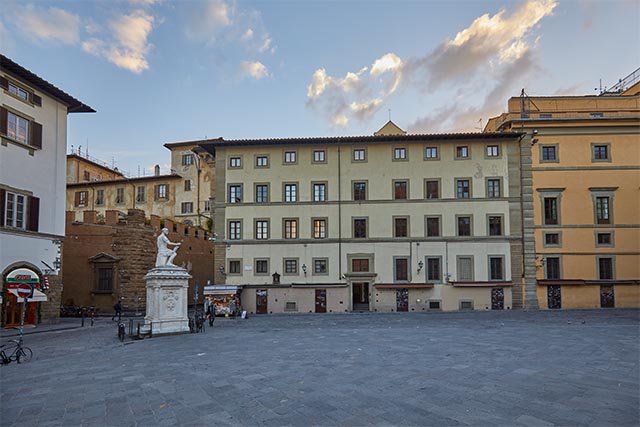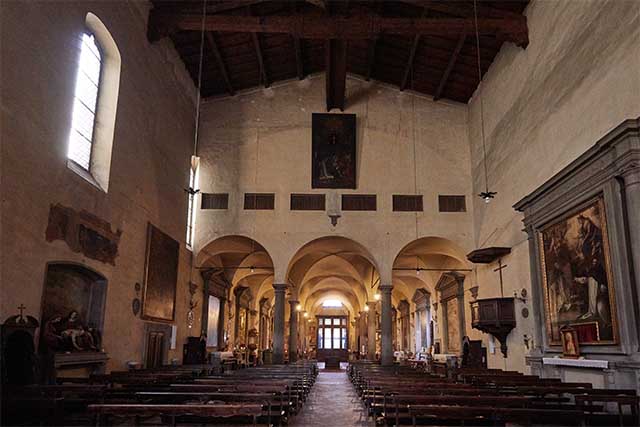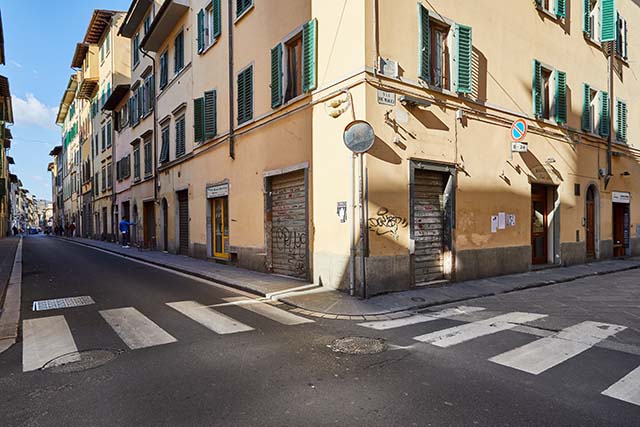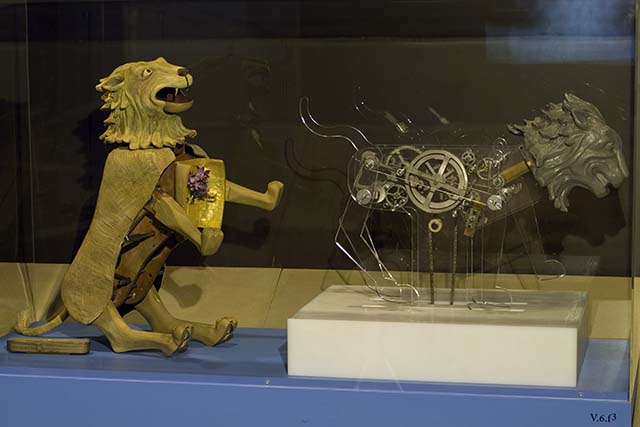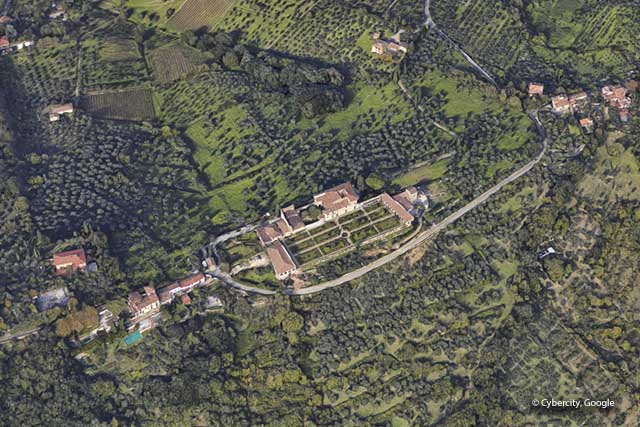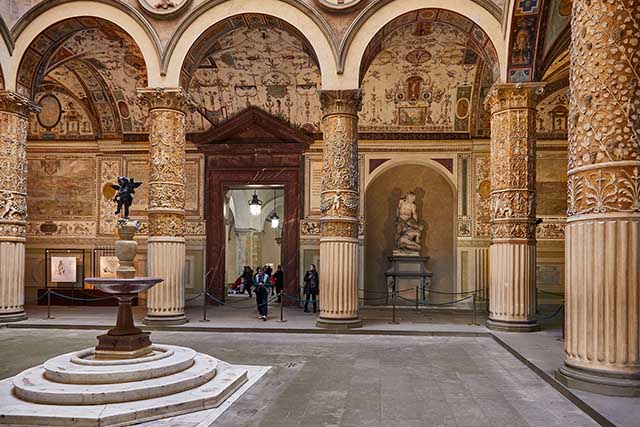Places in the Florentine area
Filter/Filtra
Forming part of the Monastery of the Holy Spirit was not only the celebrated Basilica di Santo Spirito designed by Brunelleschi, but also a library with a significant collection of manuscripts. The church is decorated with many paintings by contemporaries of Leonardo who were greatly influenced by his work. Leonardo mentions the library in an annotation dating to around 1505 in the Codex Atlanticus.
Of the waterways of the Florentine plain the Mugnone is one of the most important. Its course, in great part walkable, has been modified several times as the city has expanded until settling in its current course. Cited often by Leonardo da Vinci, its course is seen clearly in the various maps he made and in several texts.
In 1515 Pope Leo X stayed in Florence: the city held extraordinary festivities in his honour. Some of the greatest artists of the time collaborated on the scenography and organisation of the event. At this time there arose the idea of rearranging the section of Florence between Piazza San Marco and Piazza San Lorenzo. Leonardo worked on a project consisting of several parts, including the following initiatives: constructing a Medici Palace, opposite that of Cosimo the Elder; demolishing the Church of San Giovannino and rebuilding it in front of the new Medici Palace; providing a facade for San Lorenzo and enlarging the square in front of it; a new arrangement of the San Marco area.
Among the famous protagonists of the Florentine Renaissance, some showed interest in the problems of theatrical scenography . Memorable, in fact, were the theatrical/technical sets designed by Brunelleschi for some of the Florentine churches. Undoubtedly, Leonardo had in mind these elaborate theatrical sets when he designed the complex mechanical devices for the staging of Bernardo Bellincioni's Paradise Festival, presented in Milan in 1490. Sophisticated mechanisms operated by counter-weights were used for Poliziano's Orpheus, whose stage sets included a "mountain that opens" from which emerged Pluto.
In the mid-fifteenth century, the Verrocchio family had owned a house near Santa Croce. Here Andrea del Verrocchio lived: in the close vicinity was his shop, in which Leonardo too worked, his presence being documented at least in 1476. At a later time, he rented a shop near the Cathedral.
The lion menagerie was situated behind Palazzo Vecchio, in today's Via del Leone: Leonardo recalls it in two folios. The drawing of a lion is found again in a famous rebus in which Leonardo played on his own name. It is worth mentioning also the mechanical lion, an automaton that moved up to open its chest, created by Leonardo for the king of France and the Florentine community in Lyon.
Just outside Florence, along Via Santa Margherita a Montici, we find what was the Villa Tovaglia. On August 11, 1500 Francesco Malatesta sent from Florence to Francesco II Gonzaga, at the latter's request, a drawing of the villa done by Leonardo, as a project for replicating it. In effect, the architecture of this building complex, in spite of the discontinuity due to remodelling and additions, is remarkable. It is interesting to note that Bartolomeo del Tovaglia was one of the bankers recorded by Leonardo in a memorandum in the Codex Atlanticus as one of his correspondents from France and Flanders.
Nephew of Leonardo da Vinci, Pierino da Vinci was a sculptor who drew inspiration especially from Michelangelo. You can see some of his works in Pisa and especially in Florence, preserved in numerous museums and gardens. Several sculptures by Pierino have long been referred to Buonarroti himself. Some of his works are in Pisa but most are in Florence, preserved in numerous museums and gardens. Several sculptures by Pierino have long been attributed to Buonarroti himself.




